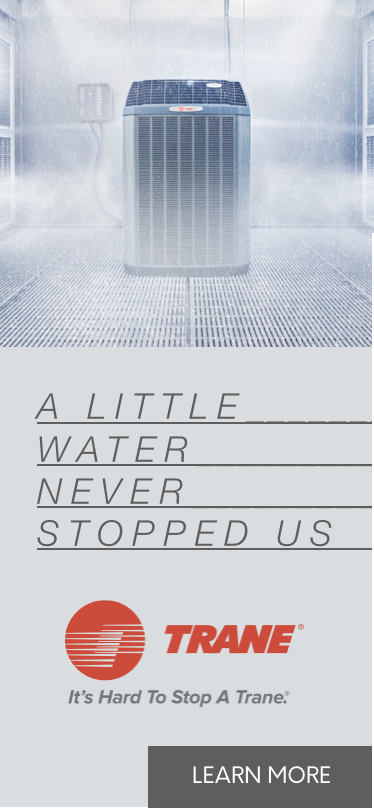HVAC Terminology
- AFUE
- Airflow
- Air Handler/Coil Blower
- BTU
- Carbon Monoxide
- Central Air Conditioning System
- CFM
- Condenser Coil
- Compressor
- Damper
- dB
- Dual Fuel
- Ductwork
- Electronic Air Cleaner
- ENERGY STAR®
- Evaporator Coil
- Heat Exchanger
- Heat Pump
- Horizontal Flow
- HSPF
- Humidifier
- Humidistat
- HVAC
- Indoor Coil
- MERV Rating
- Outdoor Coil
- Programmable Thermostat
- Refrigerant
- Refrigerant Lines
- SEER
- Split System
- Thermostat
- Ton
- Two-Stage Operation
- Up-flow
- Variable Speed Motor
- Ventilator
- Zoning
Annualized Fuel Utilization Efficiency is a measure of your furnace’s heating efficiency. The higher the AFUE percentage, the more efficient the furnace. The minimum percentage established by the Provincial government for use is 95%.
The distribution or movement of air.
The indoor part of an air conditioner or heat pump that moves cooled or heated air throughout the ductwork of your home. An air handler is usually a furnace or a blower coil.
A British Thermal unit is a unit of heat energy. One BTU is the amount of heat required to raise one pound of water by one degree Fahrenheit. The higher the BTU rating, the greater the heating capacity of the system.
An odorless, colorless, tasteless, poisonous and flammable gas that is produced when carbon burns with insufficient air.
System in which air is treated at a central location and distributed to and from rooms by one or more fans and a series of ducts.
Stands for Cubic Feet per Minute. This measurement indicates how many cubic feet of air pass by a stationary point in one minute. The higher the number, the more air is being moved through the ductwork by the system.
The outdoor portion of an air conditioner or heat pump that either releases or collects heat, depending on the time of the year.
The part of the outdoor air conditioner or heat pump that compresses and pumps refrigerant to meet household cooling requirements.
A movable plate, located in the ductwork, that regulates airflow. Dampers are used to direct air to the areas that need it most. Typically used in a zoning application.
A decibel is a unit used to measure the relative intensity of sound.
A comfort system that pairs an electric heat pump with a gas furnace, providing an energy-efficient alternative to the conventional furnace/air conditioner combination.
The method by which air is channeled from the furnace or the blower coil throughout your home.
An electronic device that filters out large particles and bioaerosols in indoor air.
An EPA (Environmental Protection Agency) designation attached to HVAC products that meet or exceed EPA guidelines for high-efficiency performance above the standard government minimums.
The part of the air conditioner or heat pump that is located inside the air handler or attached to the furnace. Its primary function is to absorb the heat from the air in your house.
Located in the furnace, the heat exchanger transfers heat to the surrounding air, which is then pumped throughout the home.
A heat pump is an HVAC unit that heats or cools by moving heat. During the winter, a heat pump draws heat from outdoor air and circulates it through your home’s air ducts. In the summer, it reverses the process and removes heat from your house and releases it outdoors.
When an air handler or furnace is positioned on its side and circulates air in one end and out the other. Ideal for attic or crawl space installations.
The Heating Seasonal Performance Factor is the heating efficiency rating for heat pumps. The higher the rating, the more efficient the heat pump. HSPF will be regulated in 2006 at 7.7.
An indoor air quality device that introduces moisture to heated air as it passes from the furnace into the ductwork for distribution throughout the home.
An automatic device used to maintain humidity at a fixed or adjustable set point.
Heating, Ventilation and Air Conditioning.
See Evaporator Coil.
The MERV (Minimum Efficiency Reporting Value) rating of a filter describes the size of the holes in the filter that allow air to pass through. The higher the MERV rating, the smaller the holes in the filter, the higher the efficiency.
See Condenser Coil.
A thermostat with the ability to record different temperature/time settings for your heating and/or cooling equipment.
A chemical that produces a cooling effect while expanding or vaporizing. Most residential air conditioning units contain the standard R-22 refrigerant, or Freon.
Two copper lines that connect the outdoor air conditioner or heat pump to the indoor evaporator coil.
The Seasonal Energy Efficiency Ratio is an energy efficiency rating for air conditioners. The higher the SEER, the better the energy performance, the more you save. The DOE’s established minimum SEER rating for cooling is 13.00.
An HVAC system in which some components are located inside the structure of the house and some are located outside. Split systems should be matched for optimal efficiency.
Usually found on an inside wall, this device operates as a control to regulate your heating and cooling equipment, allowing you to adjust your home comfort at the touch of a switch.
Unit of measurement for determining cooling capacity. One ton equals 12,000 Btuh.
Provides two levels of heating or cooling output for greater temperature control, energy efficiency and improved indoor air quality.
When an air handler or furnace is installed in an upright position and circulates air through the side or bottom and out through the top. Typically used in basement, closet and attic installations.
A motor that automatically adjusts the flow of warm or cool air for ultimate comfort.
A system that exchanges stale, recirculated indoor air with fresh, filtered outside air.
A method of partitioning a home into independently controlled comfort zones for enhanced comfort and efficiency.


